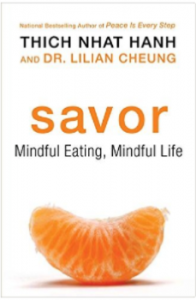Officially known as Curcuma longa, turmeric is an herb that has been used for thousands of years. You can use this incredibly tasty spice with a variety of foods and it even provides several important health benefits.
What Is Turmeric?
Native to India and related to the ginger plant, turmeric is the primary spice used in the Indian dish known as curry. Often available at ethnic grocery stores, sometimes at larger traditional grocery stores, it's best to use turmeric when it's fresh since the essential oils are more powerful. Fresh turmeric, however, doesn't last long and must either be consumed quickly, frozen, or made into powder form.
Health benefits of turmeric
Turmeric provides several incredible health benefits and may play a part in preventing many diseases. The bioactive compounds, called curcuminoids, are largely responsible for the health benefits of turmeric:
- natural anti-inflammatory properties
- highly antioxidant
- improves brain function
- may lower the risk of cardiovascular disease
- may potentially help prevent certain cancers
- when applied in paste form may help promote the healing of wounds and bruises
Tasty ways to use turmeric
Most often we think of turmeric as it is used in curries, but there are many ways to enjoy it. Incorporating healthy ingredients into scrambled eggs or a tasty frittata is easy when you add turmeric. It works well with nearly all types of veggies, particularly cauliflower. Rice, stews, soups, desserts, and tea are all delicious when turmeric is added to the recipe. Turmeric is even used in juices and different types of smoothies.
Turmeric is an incredible herb that can be used fresh or in powder form. It offers a rich, distinct flavor to dozens of dishes and may be instrumental in preventing many serious health conditions. Keeping fresh or powdered turmeric in the kitchen is a great way to add rich flavor to foods you enjoy while providing many potential health benefits.
- 1 cup coconut milk
- 2 roma tomatoes, diced (keep liquid)
- 1/2 tsp turmeric powder
- 1 1/2 tsp coriander powder
- 1 tsp grated fresh ginger
- 1/2 tsp fresh ground black pepper
- 4 coves garlic, minced
- 1 medium onion, diced
- 2-4 tbsp coconut oil
- 2 large portobello mushrooms, diced bite size
- 2 zucchini, diced bite size
- 2 yellow squash, diced bite size
- 2 cups snap peas diced
- 1 bell pepper, diced
- 1 eggplant diced
- 1 tsp sea salt
- 2 tbsp cashews, divided
- 2 tbsp cilantro, minced
- Mix together cumin, coriander, turmeric, and black pepper and set aside
- Place eggplant into a bowl and sprinkle with salt to sweat
- Set aside to sit for one hour, rinse before using
- Add 2 tbsp coconut oil to pan
- Add onion and saute until starting to soften
- Add garlic and ginger and cook 2 minute
- Add spices and stir well for 1 minute
- Add tomatoes and liquid
- Add mushrooms and stir well, cook 1-2 minutes, add more coconut oil if needed
- Add vegetables and cook 2-3 minutes
- Add coconut milk, bring to a boil, reduce heat, cover and simmer 15 minutes or so until vegetables are tender
- Add sea salt
- Serve over basmati rice
- Garnish with cilantro and cashews
- Top with quick mango pickle if desired
- 3 ripe but firm mangos, peeled, seeded, and diced
- 1/2 tsp turmeric powder
- 1/2 tsp paprika
- 1 clove garlic, minced
- 1/2 tsp sea salt
- 2 tbsp coconut oil
- 1/2 tsp mustard seeds
- 1/2 tsp urad dal
- pinch chili powder
- 1 tbsp apple cider vinegar
- heat oil
- add mustard seed and urad dal and cook 1 minute
- add garlic and cook 1minute
- add turmeric, paprika, and chili powder, stir well
- reduce heat
- add mango and vinegar, cover and simmer on low 20 minutes or until soft and well combined
- keeps well in the fridge for 2-3 weeks
Sources:
Grover, A.K. and Samson, S.E. Benefits of antioxidant supplements for knee osteoarthritis: rationale and reality. Nutr J. 2016; 15: 1.nPublished online 2016 Jan 5.
McClees, Heather. One Green Planet. How to heal cuts and wounds with turmeric. 2017 Feb 8.
Nagpal, M and Sood, S. Anti-inflammatory and Anti-oxidant Properties of Curcuma longa (Turmeric) Versus Zingiber officinale(Ginger) Rhizomes in Rat Adjuvant-Induced Arthritis. J Nat Sci Biol Med. 2013 Jan-Jun; 4(1): 3–7.
Ramirez-Tortosa, M.C., et al. Oral administration of a turmeric extract inhibits LDL oxidation and has hypocholesterolemic effects in rabbits with experimental atherosclerosis. Atherosclerosis. Volume 147, Issue 2, December 1999, Pages 371-378.
Shanmugam, M.K., et al. The Multifaceted Role of Curcumin in Cancer Prevention and Treatment. Molecules 2015, 20(2), 2728-2769.








 ook over 40 years to get to where we are now with HFCS. There's no telling how long it will take with sugar.
ook over 40 years to get to where we are now with HFCS. There's no telling how long it will take with sugar.





